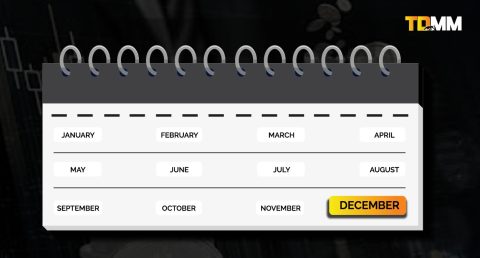TL;DR
Trump’s moves have thrown both crypto and global markets into chaos. This case study unpacks his U.S. Crypto Strategic Reserve, which adds BTC, ETH, XRP, SOL, and ADA to America’s financial playbook, and how it sent crypto prices soaring—before skepticism brought them crashing down.
At the same time, Trump escalated a trade war, imposing new tariffs on China, Canada, and Mexico, rattling investors and sparking uncertainty in stocks, commodities, and digital assets alike. Bitcoin’s role as a hedge vs. risk asset is now under scrutiny, while altcoins face a regulatory and institutional battleground.
With volatility at an all-time high, this deep dive breaks down what’s next for crypto, how traders should position themselves, and why this moment could redefine digital assets in global finance.
Introduction
Markets crave stability. Politicians thrive on disruption. When these two forces collide, the financial world enters uncharted territory.
Donald Trump, on 2nd March 2025, announced two pieces of news that caused shockwaves in traditional as well as digital asset markets:
- The U.S. Crpto Strategic Reserve – A historic initiative to include Bitcoin (BTC), Ethereum (ETH), Ripple (XRP), Solana (SOL), and Cardano (ADA) in America’s financial reserves.
- New Tariffs on China, Canada, and Mexico – A re-ignition of trade tensions that shook investors and fueled fears of economic instability.
After this announcement Bitcoin breached $94,000, altcoins surged, and speculation went haywire. But the euphoria was short-lived. Markets corrected themselves. Crypto traders were left wondering: Was this a move toward mainstream adoption, or another volatility trap?
This case study dissects the short-term market responses, the long-term consequences, and what investors and traders should know going forward.
So, buckle up, and let’s dive deeper into the whole scenario.
Why This Case Study is an ideal pick for you
- Traders need to understand volatility drivers to position themselves.
- Investors must evaluate long-term risks vs. rewards.
- Policymakers and institutions are watching for signals of market behavior.
This case study plunges into what occurred, why it occurred, and what is to come for the crypto markets.
Starting our conversation with Trump’s Crypto Strategic Reserve:
For the first time ever, a major government is officially recognizing crypto as a reserve asset—and it’s none other than the United States under Trump’s leadership.
What’s in the U.S. Crypto Strategic Reserve?
The government has committed to holding a mix of top cryptocurrencies:
- Bitcoin (BTC) – The digital gold standard.
- Ethereum (ETH) – The foundation of decentralized finance.
- Ripple (XRP) – A blockchain network focused on global payments.
- Solana (SOL) – A high-speed blockchain with growing institutional adoption.
- Cardano (ADA) – A blockchain known for its security and scalability.
The stated goal?
- Strengthen the U.S. dollar’s global position.
- Counter China’s digital yuan dominance.
- Secure an economic hedge against inflation and macro risks.
Why did they commit only These Cryptos?
Each of these assets plays a strategic role:
- Bitcoin and Ethereum are obvious choices due to market dominance.
- XRP’s inclusion suggests an interest in alternative banking solutions.
- Solana and Cardano indicate a focus on scalability and efficiency.
What was the Market Reaction
- Bitcoin surged past $94,000, gaining over 11% in a single day.
- Ethereum climbed 13% to $2,516.
- XRP, SOL, and ADA initially jumped but later corrected amid skepticism.
Traders who bought the initial hype saw massive gains. But those who stayed in too long saw those gains evaporate.
Trump’s Tariffs Timeline:
Jan. 20, 2025: On the day of his inauguration, President Trump pledges to implement tariffs on Mexico, Canada, and China by Feb. 1.
Feb. 1, 2025: Trump signs executive orders imposing 25% tariffs on imports from Canada and Mexico, and a 10% tariff on Chinese goods, effective Feb. 4. Canada announces retaliatory 25% tariffs.
Feb. 3, 2025: Trump delays tariffs on Canada and Mexico by a month, citing Mexico’s agreement to deploy 10,000 troops to the U.S. border to curb migration and ongoing economic discussions with Canada.
Feb. 4, 2025: The U.S. implements a 10% tariff on Chinese imports; China retaliates with equivalent tariffs. The U.S. Postal Service bans packages from Hong Kong and China.
Feb. 5, 2025: Facing potential disruptions for online retailers and U.S. shoppers, the Postal Service lifts the ban on Chinese packages.
Feb. 10, 2025: Trump announces a 25% tariff on all steel and aluminum imports, effective March 12, eliminating previous exemptions.
Feb. 13, 2025: Trump signs a memorandum setting the stage for “reciprocal tariffs” to take effect on April 2.
Feb. 26, 2025: During a Cabinet meeting, Trump suggests a potential one-month reprieve on tariffs for Canada and Mexico until April 2.
Feb. 27, 2025: Trump reverses course, stating tariffs will go into effect on March 4.
March 1, 2025: Trump signs an executive order to increase U.S. lumber production and orders a probe into potential lumber import tariffs, targeting significant imports from Canada.
March 2, 2025: Commerce Secretary Howard Lutnick describes tariffs on Canada and Mexico as a “fluid situation,” suggesting they could be less than 25%.
March 3, 2025: Lutnick indicates the possibility that tariffs might not be implemented, but Trump later confirms they will proceed.
March 4, 2025: Trump imposes 25% tariffs on Mexico, Canada, and China. China responds by imposing tariffs on U.S. agricultural imports such as chicken, pork, soy, and beef. Canadian Prime Minister Trudeau condemns Trump for targeting allies and promises retaliatory action. Trump threatens additional action if Canada goes ahead. Stock market falls as a response.
March 5, 2025: Trump delays auto-related tariffs until April 2.
March 6, 2025: Trump postpones tariffs on Mexican goods; later extends the same reprieve to Canadian goods. The exemptions are set to expire on April 2.
March 11, 2025: In response to Ontario’s 25% surcharge on U.S. electricity exports, Trump announces an additional 25% tariff on Canadian steel and aluminum imports, raising the total tariff to 50%. This escalation leads to significant declines in global stock markets.
March 12, 2025: The 25% tariffs on all steel and aluminum imports take effect, eliminating previous exemptions.
March 17, 2025: President Trump states he has no intention of creating exemptions on steel and aluminum tariffs and confirms that reciprocal and sectoral tariffs will be imposed on April 2.
This timeline reflects the ongoing fluctuations and strategic decisions in the U.S. trade policy under President Trump as of March 17, 2025.
Stock Market & Crypto Response
- The S&P 500 tumbled, reflecting investor fears of economic slowdowns.Notably, Goldman Sachs recently lowered its year-end target for the S&P 500 from 6,500 to 6,200, citing increased policy uncertainty and growth concerns.
- Bitcoin initially gained, but later dropped below $82,000, showing uncertainty in its role as a hedge.
- XRP and ADA Declines: Both XRP and ADA have experienced substantial drops, with XRP falling below $2 for the first time since November, reflecting investor apprehension about potential regulatory challenges.
What This Means for Global Markets
- Higher tariffs = higher inflation = potential for interest rate hikes.
- More trade tensions = supply chain disruptions = risk-off sentiment.
- Bitcoin’s role as a hedge will be tested, especially if traditional markets continue falling.
Crypto vs. Trade Wars
With Trump’s tariffs shaking global markets, investors are scrambling for stability. Stock markets are in turmoil, commodities are fluctuating, and economic uncertainty is rising. Bitcoin, often called “digital gold,” is at a crossroads—this time, it’s facing a different kind of test: trade wars
Bitcoin’s Track Record as a Hedge
2020 – COVID Crash: Fell over 50% but recovered faster than stocks, hitting new highs.
2023 – Banking Crisis (SVB, Credit Suisse): While banks collapsed, Bitcoin surged 40%, proving its strength as a financial alternative.
These events reinforced Bitcoin’s role as a hedge. But this time, the trade war is creating new dynamics.
Bitcoin’s Reaction to Tariffs
Post-Announcement Drop: Instead of rising, Bitcoin fell alongside stocks, acting more like a risk asset than a hedge.
Whales Took Profits: Large investors cashed out, signaling skepticism rather than confidence.
Stock Market Correlation: Bitcoin moved in sync with equities, showing it’s still tied to broader financial trends.
What’s Next for Bitcoin and Crypto?
Short-Term: Extreme Volatility
- With uncertainty surrounding tariffs, interest rates, and global trade, Bitcoin is likely to experience sharp price swings.
- Traditional markets will influence Bitcoin’s movement as investors assess economic fallout.
Long-Term: A Critical Moment for Bitcoin’s Safe-Haven Status
- If inflation spikes further, Bitcoin could regain momentum as a hedge against currency devaluation.
- Institutional confidence will determine whether Bitcoin cements its position as a true alternative asset or continues behaving like a speculative market-driven asset.
- Altcoins face a tougher road ahead—projects with weaker fundamentals may struggle to maintain investor confidence.
Bitcoin’s response to the trade war escalation will shape its long-term narrative. The market is watching closely, and the next few months will determine whether Bitcoin emerges stronger or if it remains just another volatile asset in the global financial system.
The crypto market is caught in a whirlwind of mixed emotions following Trump’s Crypto Strategic Reserve announcement. Some view it as a historic validation of crypto, while others remain skeptical about its execution. The result: volatility, divided sentiment, and aggressive market swings.
Market Sentiment: Bullish, Bearish, or Confused?
Institutional Reactions: Divided Outlook
Bullish Hedge Funds: Some institutional investors see this as a game-changer, treating it as a sign of government-backed legitimacy for crypto. Bitcoin and Ethereum stand to benefit the most, with expectations of increased institutional inflows.
Skepticism and Uncertainty: Others are questioning the reserve’s structure, the selection of assets, and whether this is a serious economic play or a political maneuver. Doubts around execution have led to hesitation, preventing a full-fledged institutional rally.
Retail Traders: FOMO vs. Reality Check
Retail FOMO: The announcement triggered a frenzy of buying, pushing Bitcoin past $94,000 and Ethereum up 13%. Many retail investors jumped in expecting a sustained breakout, believing this marks a new era for crypto.
Liquidations Hit as Volatility Spikes: The surge was short-lived for many traders. Overleveraged positions got wiped out, leading to a wave of liquidations as prices corrected. The market turned into a battleground between those doubling down and those cutting losses.
Social Media Sentiment: A Split Market
- Some believe this is the beginning of Bitcoin’s next parabolic run, fueled by institutional adoption.
- Others fear a trap set by whales, using the hype to exit at peak prices, leaving retail traders to hold the bag.
Crypto markets remain in a state of flux, driven by institutional hesitation, retail speculation, and unpredictable price action.
Key Possibilities for Traders & Investors
Scenario 1: Crypto Gains Institutional Traction
If the U.S. government also fulfills its promise, crypto might see a seismic change in institutional adoption. An appropriately defined policy framework would also open the door to significant capital flows from hedge funds, asset managers, and even mainstream financial institutions.
- Regulations might be more positive for assets under consideration for the reserve, with more explicit guidelines for compliance and custody.
- Institutional demand for BTC, ETH, XRP, SOL, and ADA will soar, fueling recurring price appreciation and validating crypto as a legitimate mainstream financial tool.
- Banks and companies will begin keeping Bitcoin on their balance sheets, following the U.S. government’s lead and taking adoption to the next level.
If done properly, this has the potential to be a watershed moment where crypto shifts from a speculative vehicle to an accepted financial reserve with worldwide ramifications.
Scenario 2: Policy Reversals & Backlash
Doubt about the reserve may provoke a political and regulatory pushback that halts or even reverses momentum. Fears of centralized power, implementation issues, or geopolitical hazards may prompt lawmakers to question the venture.
- Doubt may burden crypto prices with volatility as investors doubt the viability of the reserve.
- Altcoins beyond the reserve—particularly those with less robust regulatory position—may be subject to greater scrutiny, resulting in possible delistings or additional compliance barriers.
- If influential policymakers resist, the effort can stall, keeping the market in suspense and inhibiting institutional adoption from gaining momentum..
Without robust follow-through by regulators and policymakers, the momentum will dissipate, leaving crypto in a vulnerable position where it is still an alternative asset and not a mainstream reserve tool.
Scenario 3: Bitcoin Becomes the Ultimate Hedge
If conventional financial markets continue to fall under the weight of trade wars, inflation, and economic uncertainty, then Bitcoin may start to break free from risk assets and emerge as the ultimate hedge.
- Macroeconomic uncertainty might push investors to Bitcoin as a digital store of value, making it more a hedge against currency devaluation and geopolitical risk.
- Even more nations will probably follow Trump’s example, incorporating Bitcoin and other cryptos in their reserves as a hedge against inflation and recession.
- Institutional investors, who once perceived Bitcoin as a speculative asset class, might reverse their attitude and treat it like digital gold, boosting long-term positions and declining short-term trading.
This development would cement the place of Bitcoin in world finance, positioning it as a central component of national and institutional reserves.
Trading & Investment Strategies for the Next 6 Months
The market is in a very reactive mode, with institutional flows, regulatory changes, and macroeconomic uncertainty leading to volatility. A balanced strategy of short-term tactical trading and long-term accumulation is required.
Short-Term Strategy: Trading Volatility with Precision
- Use tight stop-losses (3-7%) to protect against liquidation during rapid market swings.
- Take profits in 10-15% increments as whales drive aggressive price action.
- Watch XRP, ADA, and SOL for dip-buying opportunities if institutional interest returns.
- Use options for risk management—selling covered calls for income, buying puts for downside protection.
- Track futures market liquidity to identify overleveraged positions and liquidation events.
Long-Term Strategy: Positioning for Institutional Shifts
- Maintain core Bitcoin exposure (50-60%) while diversifying into ETH, SOL, and select altcoins.
- Monitor institutional accumulation using on-chain data and exchange outflows.
- Stay updated on U.S. policy shifts, as regulation will dictate market direction.
- Gradually accumulate in macroeconomic downturns to capitalize on future price recoveries.
- Allocate to DeFi and tokenized assets as institutional adoption expands.
Navigating the next six months requires precision trading in the short term and disciplined accumulation for long-term gains. Balancing risk and opportunity will be key in this evolving market.
Closing Thought
Trump’s Crypto Strategic Reserve has remapped the digital asset narrative, driving crypto deeper into institutional finance. Lines are blurring between decentralized assets and traditional markets, and with trade wars driving economic insecurity, Bitcoin and altcoins now constitute centerpieces of global financial policy.
Market sentiment is still split, but one thing is certain—crypto is no longer an alternative asset. It has moved into a new era where policy choices, institutional adoption, and macro forces determine its course. To move through this space, strategic thought, flexibility, and a good sense of the forces that are shaping the future of finance are needed.





